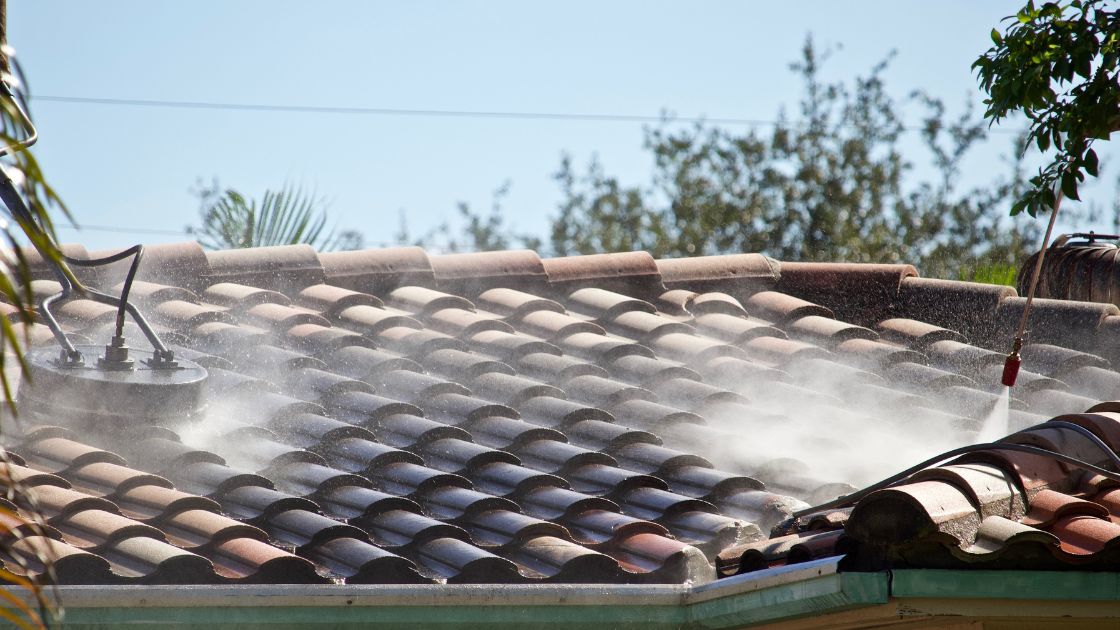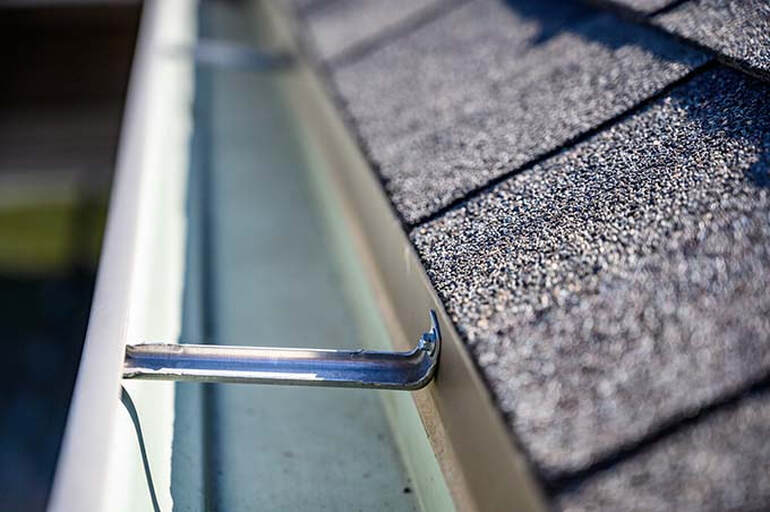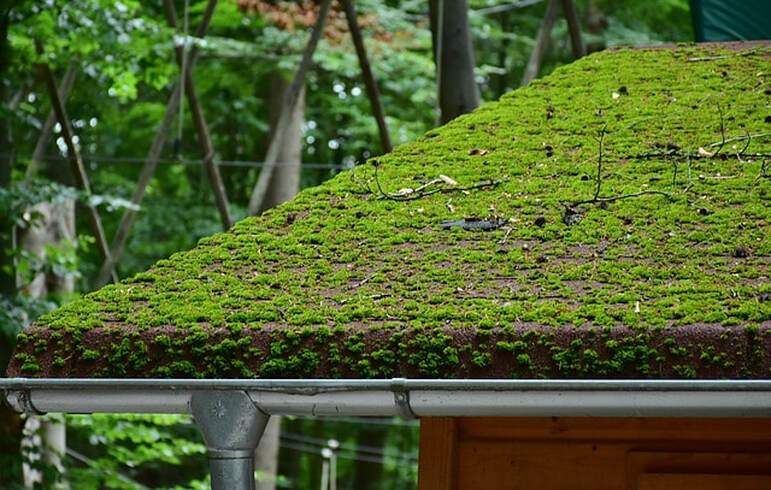Can I Clean My Roof Myself?Some chores seem easy to do by yourself but roof cleaning is definitely not one of them.
There are several very good reasons why it is not advisable to act on the question; "Can I clean my roof myself?" 1. You DO NOT want to fall Assuming that you are not afraid of heights (you wouldn't even try to take this task on if you are deathly afraid of heights!) there is still a very high risk of falling and hurting yourself. Some roofs might not be as solid as they were initially and deterioration can cause an accident. Since cleaning roofs may not be your actual profession, you may not be aware of the precautions to take. Professional cleaners are drilled about safety and precautions before they are hired to work. Aside from falling, there are other ways that you can hurt yourself up on your roof. If your roof has a slope, the slope can put you off balance and you can twist your ankle, get scrapes or scratches and even hurt your back. Debris on the roof can cause you to slip while protrusions might trip you. 2. You Could Damage Your Roof You could damage your roof and this can turn out more expensive than hiring a professional roof cleaning service. Older roofs may have deteriorated or termites might have compromised the integrity of the wooden structure holding up the roof. Stepping on the wrong place might result in damaging the roof or, worse, you falling through and creating a hole. 3. Equipment Rental Roof cleaning equipment and materials are sometimes specialized for efficiency and safety. You may have to rent expensive equipment and buy expensive materials to clean your roof on your own. Professional cleaners already have their equipment and materials to serve your needs. 4. Time Consuming You might not realize this but the roof is wider than you might think. It takes time to clean it especially if you are meticulous and thorough. Roof cleaners who are experienced and experts at this chore are likely to be more efficient than you when it comes to cleaning. You will save time if you hire professionals for the job. 5. Insects and Animals One of the more dangerous risks that could happen to you if you opt to clean the roof is encountering animals and insects that have made your roof or parts of it their home. Small animals and insects do not appreciate being disturbed and might attack you causing you harm. In your haste to retreat, you might have an accident. You might encounter the following on the roof:
6. Expertise and Experience Professionals in the business have the experience and expertise since they clean several roofs in a month. Nothing beats experience when it comes to a professional cleaning service. Some services also require their workers to go through various seminars and workshops to enhance their knowledge. They should be well-versed in updated methods and techniques to deal with any issues that come with cleaning roofs. Roof cleaning is one of the chores that should be left to the professionals. Checkout this related article about, taking good care of your roof. Best Practices of Gutter CleaningsThe best practices of gutter cleanings involve removing and clearing of debris from the roof and gutters, flushing gutters, and replacing missing gutter hardware. Also, adjusting hangers and straps as well as testing gutters for proper flow ensures they are clean. There are various practices of cleaning gutters that offer the best experience. The following are some of the best methods for clean house gutters. Gutter cleaning by hand It is one of the best practices for cleaning-out gutters since it does not require any unusual equipment or skill. All that is needed is a stepladder to get you up, a vessel to put the muck from the gutters, and strong or handy gloves that protect your hand while you are cleaning the gutters. It is a simple method that only needs you up the roof and pulls out anything that blocks the rain gutters. Some of the kinds of stuff you find on the gutters are disgusting because it is a combination of dead insects and animals, tree leaves, dirt, and many more things. Besides, the method of cleaning is labor-intensive. However, it is a more accessible and affordable way of cleaning out gutter for everyone who owns a house. On top of that, it is easy to spot potential problems or damages on the gutters and corrective measures adopted to avoid costly repairs. Use of blower to clean gutters It is an alternative way of cleaning gutters for individuals who dislike hand cleaning. Blowers are fitted with pressure gadgets and thus release air at a very high pressure that usually works well with jobs such as gutter cleaning. The method is simple and very effective on less sticky and moist mucks on the gutters. Frequent blowing help to maintain clean gutters because the leaves and other light debris will be brownout and prevent gutters blockage. The method is time-saving, less risky, and can be used to clean out the blockage. However, blowers could not best suit to clean gutters with excess sticky and wet debris. Gutter cleaning with a power washer A power washer is the easiest way to clean gutters. It uses a high powered stream of water to remove debris and dirt from the gutters. It is an ideal option because when used on a gutter, a power washer removes anything in its path. Unlike other cleaning practices, power washer removes every bit of muck regardless of their nature and reducing any chance of blockage. The method is effective and guarantees clear and clean gutters, thus increasing their lifespan. Utilizing robots to clean out gutters Cleaning robots is one of the options that some people consider. Gutter cleanings robots are real and work perfectly through ensuring the gutters are clean without the involvement of human labor. The robot is programmed to clean out, brush off the debris, and ensure no dirt is left on the gutters. It is an expensive option but an effective way to ensure your gutters are clean regularly without struggles. However, robots do not detect any damage or potential problems on the gutters that require immediate attention and thus may lead to unexpected and expensive repairs. Keep Your Roof Moss FreeMoss severely damages the structural integrity of any roof they grow on. Moss is a flowerless plant that grows in a blanket in a natural environment, especially on trees.
Moss canopy is beautiful, depending on the circumstances or the surface it occupies. Moss that grows on the rooftop is considered a threat and is no longer lovely. This is because moss thrives in a damp environment and starts to establish roots on the roof and begin to degrade it, eventually lead to holes on your roof. Since moss on the roof reduces its lifespan, it is essential to take some of the following steps to prevent moss growth on your roof. Trim or prune trees Shade from overhanging tree branches creates a perfect condition for the growth of moss because it covers it from intense sun rays. Also, trees often drop debris on the roof, which decays and gives moss the right nutrient and texture to grow. Therefore, regular inspection and trimming of trees around your compound will help create a harsh environment for moss plants to grow or survive. Clean gutters on your roof regularly It is unfortunate that regardless of regular tree pruning, debris that is airlifted by wind may get stuck on the roof and later in the gutters. Without a regular check, gutters block and water levels rise, which creates a conducive environment for the growth of moss. Cleaning ensures the gutters are clear from clogging, and thus moss growth is ultimately prevented. Use anti-moss strips Copper and zinc elements contained in anti-moss pieces disrupt the ideal conditions or environment that moss thrives. To eliminate or prevent moss growth, cut zinc or copper into strips and nail them on the roof. Over time, when the raindrops zinc or copper residues coats the roof, and this prevents the growth of moss and other organisms such as algae. Anti-moss strips work best when it is fixed before the moss starts to grow. Kill existing moss using a cleaning mixture Spraying a mixture of bleach and water help kill any moss on the roof and prevent further growth. The blend creates a harsh condition that is not favorable for their growth, leaving a pristine roof. Painting your roof Paints are made from chemicals which do not allow the growth of moss. The paint coating protects the roof through reacting with the moss roots, and eventually, it dries up. It is a long-lasting solution that does also prevents corrosion and rust stain formation. Paints work best when it is applied in a moss-free roof. Keep your roof clean The clean environment does not create any chance for the growth of moss. The use of high-pressure cleaning ensures the roof is well-scrubbed and thus removes or damages any moss that may be forming or growing. Also, both use of chemical cleaning methods continues to disrupt any growth of moss. Regular roof cleaning is the best method to prevent moss growth on the roof because it is cheap and affordable for everyone. It is essential to understand that moss growth should be prevented from further growth at its early stages. It is easy to avoid its growth than to remove overgrown moss because it is hectic, labor-intensive, and costly. Now that you know how to maintain your roof you can do it yourself. But if you want to save time, and hire a professional roof cleaning company. |
SERVING ALL OF PORTLAND METRO & SURROUNDING AREAS |
BUSINESS HOURS
MON-FRI: 8AM TO 7PM SAT-SUN : 8AM TO 7PM |
CALL US TODAY
(971) 284-3558 SOCIAL MEDIALICENSED & INSURED
LLC # 655D595Q4 POLICY# NN1345586 |







